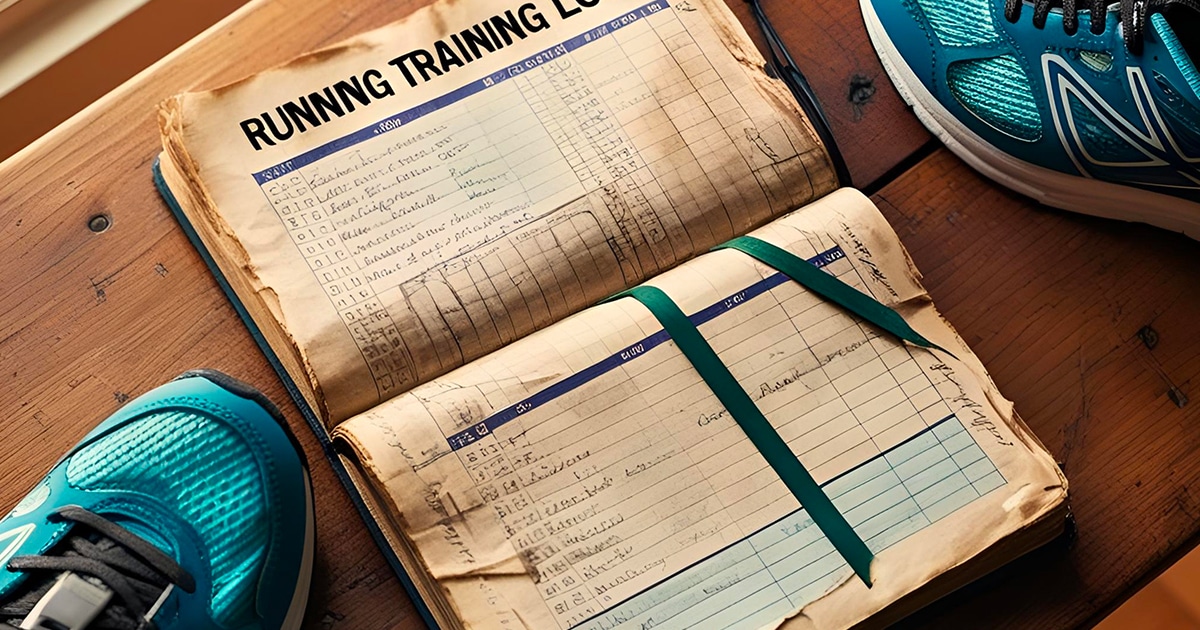The running training log, an old-school thing?
In an era of apps that generate endless statistics, the good old training log might seem like a relic of the past. Whether in its traditional paper form or its digital variant, the training log still holds significant advantages… provided it is well-kept!
Before discussing the benefits of a training log, it is essential to understand what it entails. Simply put, a training log is the athlete’s personal diary: the athlete records each session, notes their sensations, and details the weather conditions and/or parameters that might have influenced their performance. The training log is a valuable tool for both the athlete and their coach as it allows for tracking and remembering the workout regimen. While digitalization has made paper logs somewhat obsolete, the training log remains invaluable. Here’s why.
| Benefit #1: Boosting Motivation and Building Confidence
Documenting each completed session in a log allows athletes to acknowledge their performances and progress. The runner can see that they have successfully completed a challenging session that might have seemed impossible two months ago. They can also flip through their log to track personal growth, by comparing times, session difficulty, or their perceived exertion. A detailed training log is the only way to appreciate such advancements!
➡️ The log provides reassurance, enhances confidence levels, and supports maintaining consistency. At the end of race preparation, glancing at the log can boost serenity, helping athletes approach the start line more calmly.
| Benefit #2: Understanding Performance and Sensations
Experiencing awful feelings, unexplained fatigue, or feeling exceptionally fit… No matter the sensation, keeping a training log helps understand why you’re feeling a certain way. Analyzing the reasons behind poor performance or an outstanding form helps identify what works and what doesn’t.
Moreover, a runner is not just a relentless machine cranking out sessions without pondering! They must also know when to step back, and occasionally postpone or cancel a session due to extreme fatigue, a long day at work, or a sleepless night due to a child’s illness. It’s crucial to avoid overtraining, which could lead to exhaustion or injury.
➡️ The training log is a powerful tool for analyzing fitness levels and making decisions about adapting the training plan.
| Benefit #3: Avoiding Failure
A slight lack of discipline, a few mistakes here and there… Thanks to the training log, you quickly realize what was done right or wrong. Consequently, you can adjust your goals to avoid a major disappointment on race day. Thus, it won’t be a failure (along with its negative impacts on self-esteem, confidence, and motivation), but rather a success in achieving the newly set goal.
➡️ The log helps identify the shortcomings of a preparation plan (errors, injuries, etc.), allowing you to adjust your goal to ensure it remains realistic and achievable.
3 Tips for a Truly Useful Training Log
- Simple and Effective: The primary quality of a training log should be its readability. Avoid scribbles, long-winded session details, and unnecessary information. Stick to the essentials! The idea is not to write a never-ending personal diary but to create a tool for understanding your actions.
- Essential Information: Simple doesn’t mean simplistic. So, record essential data such as : the date, session duration, kilometers covered, type of session (threshold, max aerobic speed, long run, easy jog…), session details (for example: 1h30 with 3×10’ at threshold – recovery 1’30’’), feelings experienced (e.g., “heavy legs during the first half,” “session completed with ease, legs feeling great,” or “minor pain in the right calf”), and the conditions during the session (weather, a very demanding day at work, session done alone or with a group).
- Regularity: Make a habit of noting each day’s session every evening (or at worst, the next morning). Avoid waiting several days, as memory will filter out details, and essential elements might be forgotten!



